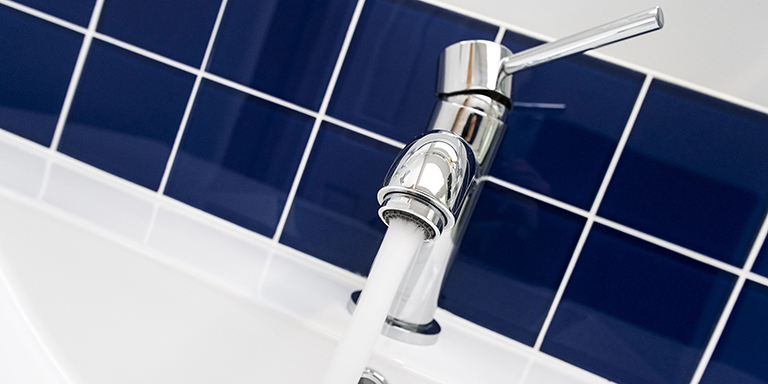Maintaining your home’s plumbing can feel daunting, but it’s crucial for a healthy living environment. Imagine turning on the tap and getting a rush of clean, fresh water every time. That dream can easily become reality with regular maintenance, especially through flushing your water pipes. In this blog post, we’ll explore the importance of this often-overlooked task and how it can save you money, time, and headaches down the road.
The Basics of Water Pipe Flushing
What is Water Pipe Flushing?
Water pipe flushing is a straightforward process that involves pushing water at high pressure through your plumbing system to remove built-up sediments and contaminants. This action helps maintain the efficiency and health of your entire plumbing framework.
Why It’s Essential for a Home’s Plumbing System
Over time, minerals, rust, and other debris accumulate inside your pipes. These sediments not only affect the quality of your water but also pose risks to your plumbing. Flushing ensures these harmful deposits are cleared out, maintaining the smooth flow of water throughout your home.
How Sediment Buildup Affects Pipes and Water Quality
Sediment buildup restricts water flow, leading to increased pressure and the potential for leaks or bursts. Additionally, these accumulated particles can degrade water quality, causing unpleasant tastes and odors. Regular flushing minimizes these issues, ensuring your water remains clean and your pipes stay in good condition.
Benefits of Regular Flushing
Improved Water Quality and Taste
One of the most immediate benefits of flushing your water pipes is the noticeable improvement in water quality. By eliminating sediments and contaminants, the water flowing from your taps will be clearer, fresher, and better tasting. This is particularly important for drinking water and cooking.
Prevention of Clogs and Leaks
Clogs and leaks are not just nuisances; they can lead to serious structural damage and costly repairs. Regularly flushing your pipes reduces the risk of blockages by clearing out potential clog-inducing particles. This proactive measure can save homeowners significant amounts of money and prevent the stress of unexpected plumbing emergencies.
Increased Lifespan of Plumbing Fixtures and Pipes
Your plumbing system’s longevity is directly related to how well it is maintained. Regular flushing helps reduce wear and tear on your pipes and fixtures, extending their lifespan. This means fewer replacements and repairs over time, helping you get the most out of your plumbing investment.
How Often Should You Flush Your Water Pipes?
Water Quality
The frequency of flushing varies depending on your local water quality. Areas with harder water or higher mineral content might require more frequent flushing. Monitoring your water quality through periodic testing can give you a clearer idea of how often this task should be performed.
Pipe Material
Different materials react differently to sediment buildup. For instance, older metal pipes may corrode faster than modern plastic ones. Understanding the type of pipes in your home can guide you in setting a proper flushing schedule.
Age of the Plumbing System
Older homes with aging plumbing systems generally require more attention. If your home has an older plumbing setup, more frequent flushing may be necessary to maintain optimal performance and prevent deterioration.
DIY vs. Professional Flushing
Step-by-Step Guide for Homeowners
If you’re a hands-on homeowner, flushing your water pipes can be a manageable DIY task. Here’s a simple guide:
- Turn Off the Main Water Supply – Locate your main water valve and shut it off to prevent water flow.
- Open All Faucets – This will drain any remaining water and relieve pressure in the system.
- Turn on the Main Water Supply – Gradually turn the water back on while allowing it to flow through the open faucets.
- Flush Individual Fixtures – Run water through each faucet and fixture for several minutes to ensure all sediments are cleared.
- Check Water Clarity – Once the water runs clear, close the faucets.
When to Call in Professional Plumbers
While DIY flushing is feasible, there are situations where professional help is warranted. If your pipes are significantly old, heavily corroded, or you’ve noticed persistent issues, a professional plumber can offer a more thorough and safe flushing. They have the expertise and equipment to handle complex cases and can provide additional routine maintenance tips.
Bodenheimer Plumbing Services: Your Go-To for Home Plumbing Maintenance
At Bodenheimer Plumbing Services, we understand that plumbing maintenance can be overwhelming. That’s why we offer professional flushing services to keep your pipes clean and efficient. Our team of licensed plumbers has years of experience in handling various plumbing systems and can provide tailored solutions based on your specific needs. Contact us today to schedule a flushing appointment and experience the benefits of regularly maintaining your home’s water pipes!


